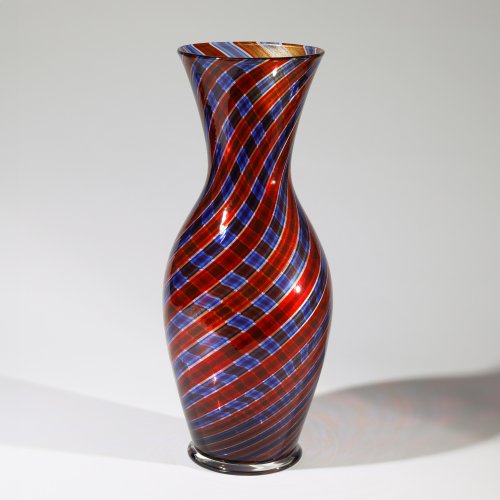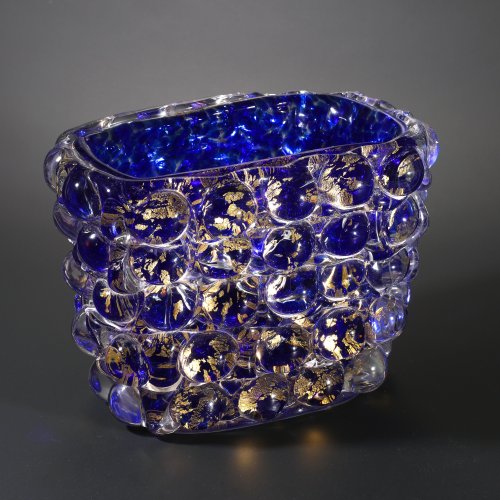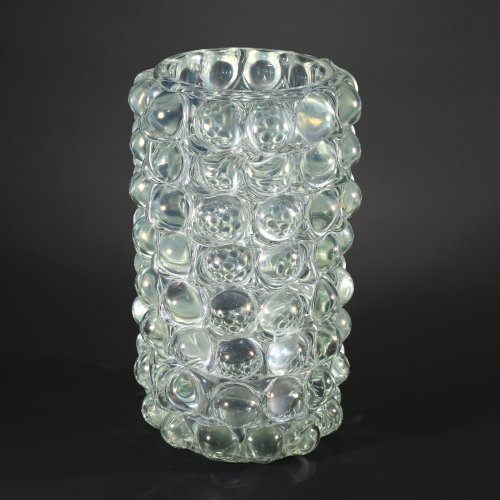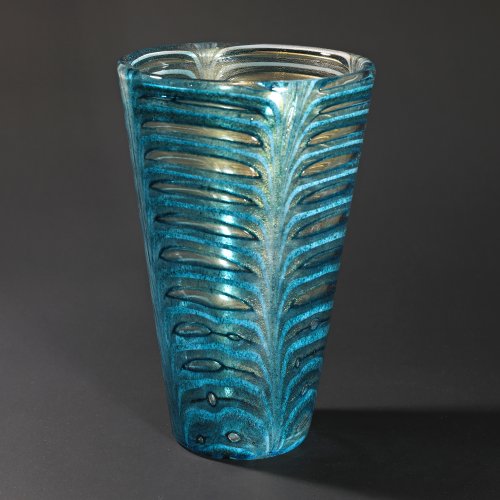Biography
For more than fifty years, Ercole Barovier shaped Murano glass art with his innovative designs. The descendant of the long-established family of glassblowers, whose roots date back to the 15th century, actually aspired to a career in medicine. After the First World War, however, the thirty-year-old joined the company of his father Benvenuto and his uncle Giuseppe, who had successfully carried out the designs with Murrine von Vittorio Zecchin as "Artisti Barovier".
Ercole did not work at the furnace himself, but concentrated from the beginning on technical experiments and drawing new designs for the family business, which had been operating under the name “Vetreria Artistica Barovier & C.” since 1919. In 1929 he made his breakthrough with his “Primavera” glasses. The press and customers were equally enthusiastic about the milky white vessels, which were characterized by a fine, decorative craquelé (cracked). According to Ercole Barovier, who gave many lectures at specialist conferences in the glass industry, the new glass with the craquelé effect was created by chance and, despite numerous attempts, Ercole failed to produce it again.
Read more ...Read less ...Objects by Ercole Barovier
-

-

Ercole Barovier Barovier & Toso, Murano
Large Vase Spira aurata
Estimate: 600 € - 1,000 €
Unsold lot
-

-

-
Sold

